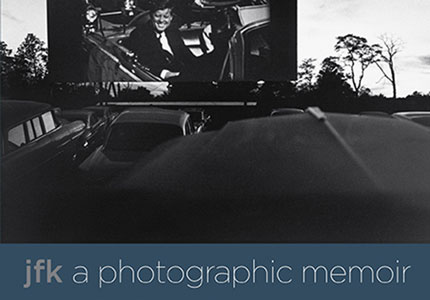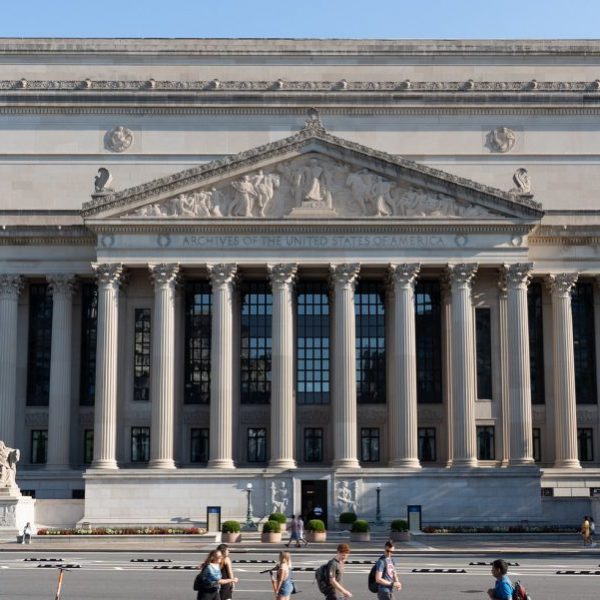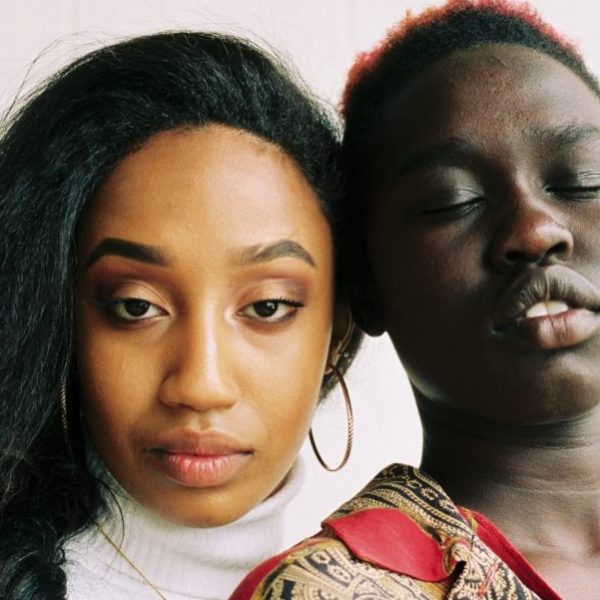Notes from the Field: JFK in the 1960s
Rebecca Levinsky—
 A Great Crowd Had Gathered: JFK in the 1960s, on view at the Yale University Art Gallery, captures the essence of Kennedy’s life in the public sphere and the effects of his assassination on the American public.
A Great Crowd Had Gathered: JFK in the 1960s, on view at the Yale University Art Gallery, captures the essence of Kennedy’s life in the public sphere and the effects of his assassination on the American public.
The exhibition space itself creates a somber mood. The walls are painted a deep blue that is both patriotic and also mournful. The layout of the photographs, which are displayed in single file or small groupings, promotes individual contemplation. The exhibition is not a eulogy, however, because it is also a celebration of the instances of unity during Kennedy’s presidency. As the exhibition title attests, they gathered in “great crowds.” The images in the exhibition present these diverse crowds of young and old, black and white, and affluent and poor Kennedy supporters.
The austerity of the exhibition space emphasizes the power of the few images selected for the exhibition. Only 32 frames hang on the walls in the gallery, and yet the political atmosphere of this decade comes across incredibly strongly. A timeline band that runs across the top of the walls calls out major events from the decade, and the images present poignant reactions to many of these events. The exhibition begins by following Kennedy’s political career on the campaign trail and concludes with space exploration at Cape Kennedy in 1969.
The 1960s were also a time of technological innovation, and the exhibition explores some of these important advances as they emphasized and shaped Kennedy’s impact. Photographic reproductions were more available to the public in the 1960s than ever before, including the first ever televised presidential debate. Additionally, via photo-telegraphy, news wires distributed photographs instantaneously across the nation. Such widespread availability of reproduced images of Kennedy, and in particular of his assassination, has grounded many of the images of this exhibition in the American consciousness.
I found the most poignant images in the exhibition to be those taken following Kennedy’s assassination. Even though I was not yet born in the 1960s, a few of these images—such as the photograph of Jack Ruby killing Lee Harvey Oswald—are still familiar to me because they have become incredibly iconic. More haunting, though, are the photographs of ordinary people, and of empty storefronts filled with images of Kennedy. A number of these are contained in the book JFK: A Photographic Memoir, a book of Lee Friedlander’s photographs published recently by the Yale University Art Gallery and distributed by Yale University Press. The affecting images collected here presents mourning as both a solitary and also communal experience. It ends, interestingly, with photographs taken in 1962 at the Columbus Day Parade. The sense that the public is still waiting for Kennedy is pervasive, both in the exhibition and the book.
The exhibition’s final photograph shows the moon landing, but in an emotional mood that matches the exhibition’s aura. The photograph does not depict a man on the moon, or a space shuttle during blast-off. Instead, photographer Garry Winogrand has captured Cape Kennedy, Florida, at the time of a rocket launch in 1969. Onlookers gather around the entrance to the John F. Kennedy Space Center and look up at the sky, towards the future. Yet to do so, they have gathered at a location named in honor their deceased president. These Americans cling to the past as they look to the future. Kennedy may no longer be around, but his presence, his image, his impact, will linger on—at sites like Cape Kennedy, in exhibitions like A Great Crowd Had Gathered, in photographs such as the ones in JFK: A Photographic Memoir.
Rebecca Levinsky is a junior at Yale University, majoring in History of Art, and is an Art Workshop Assistant at Yale University Press.


























